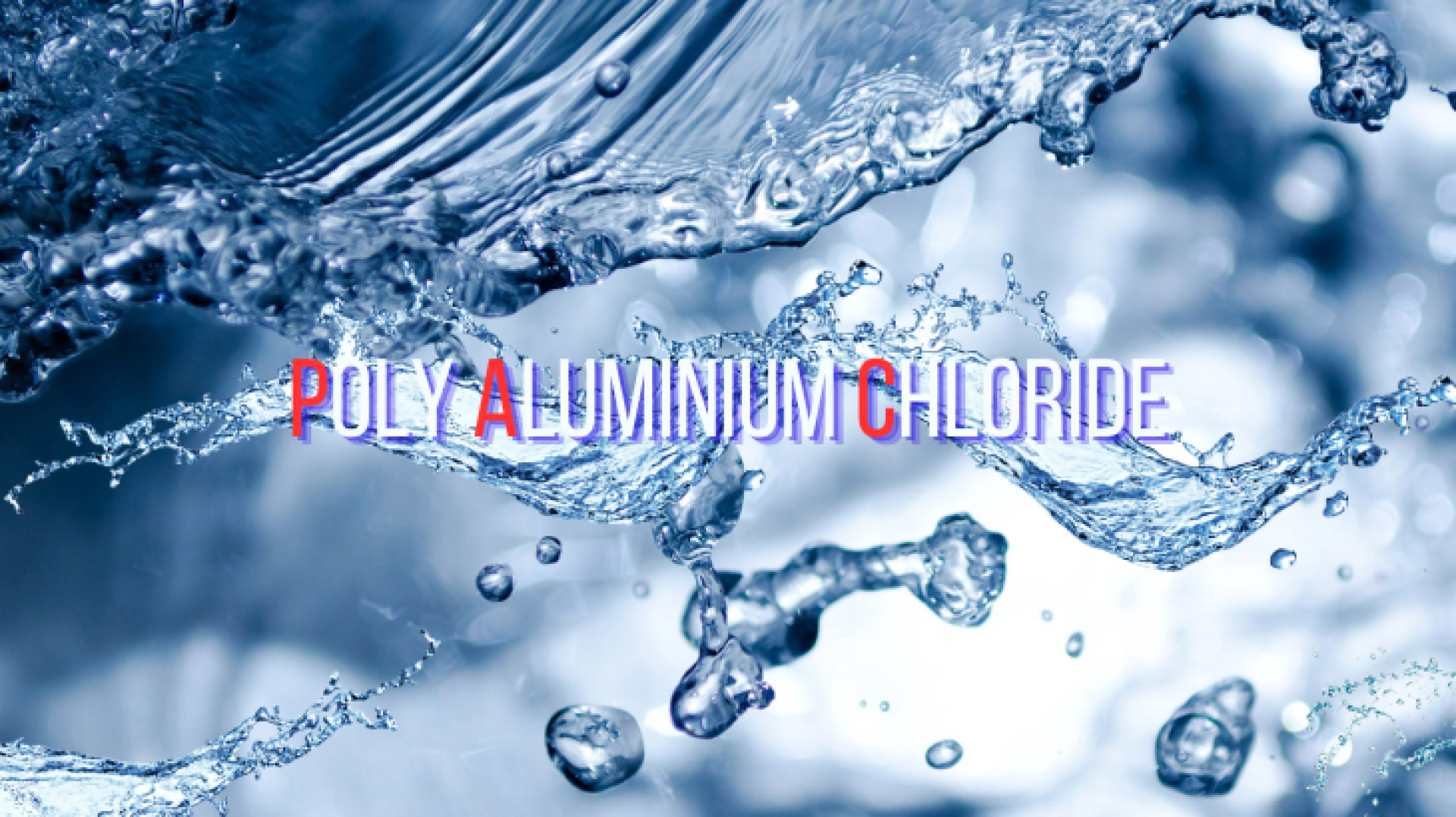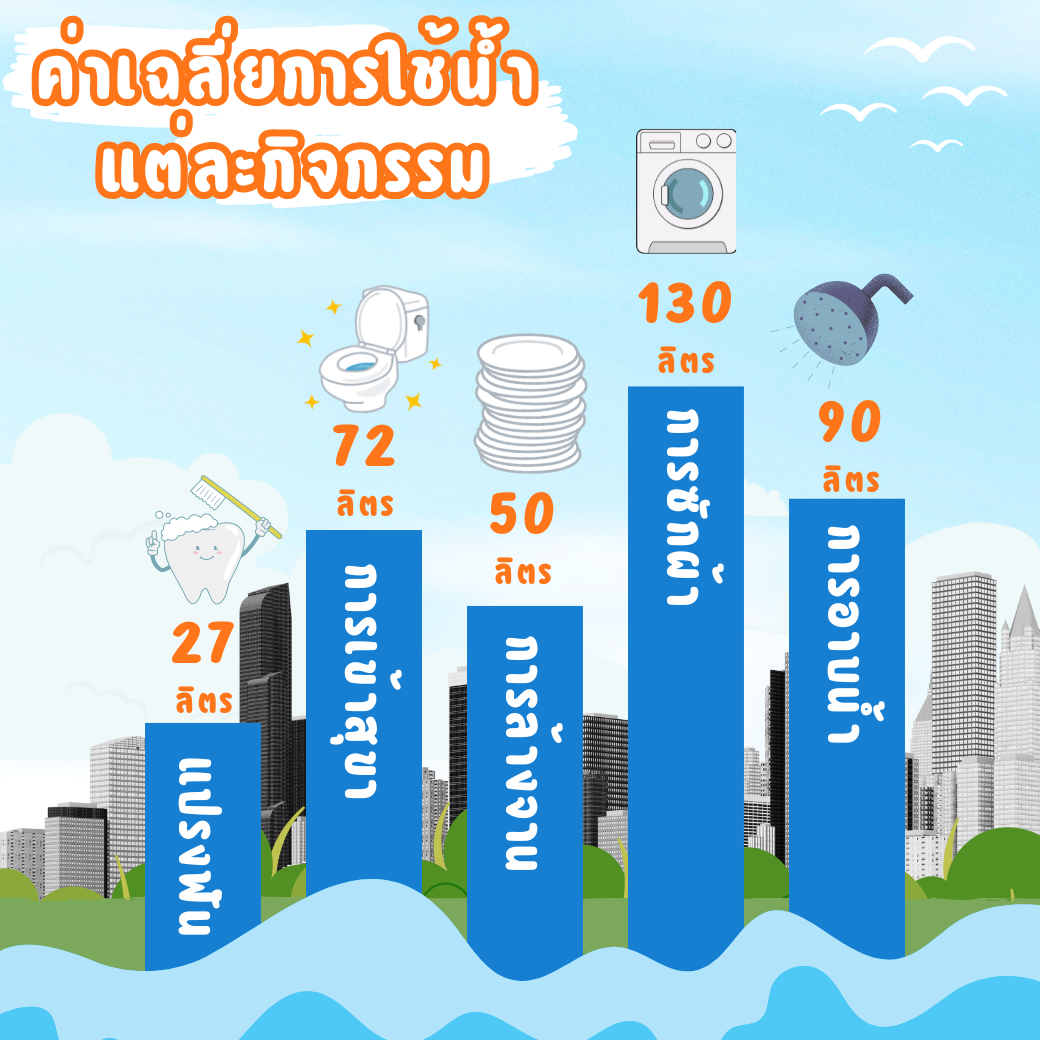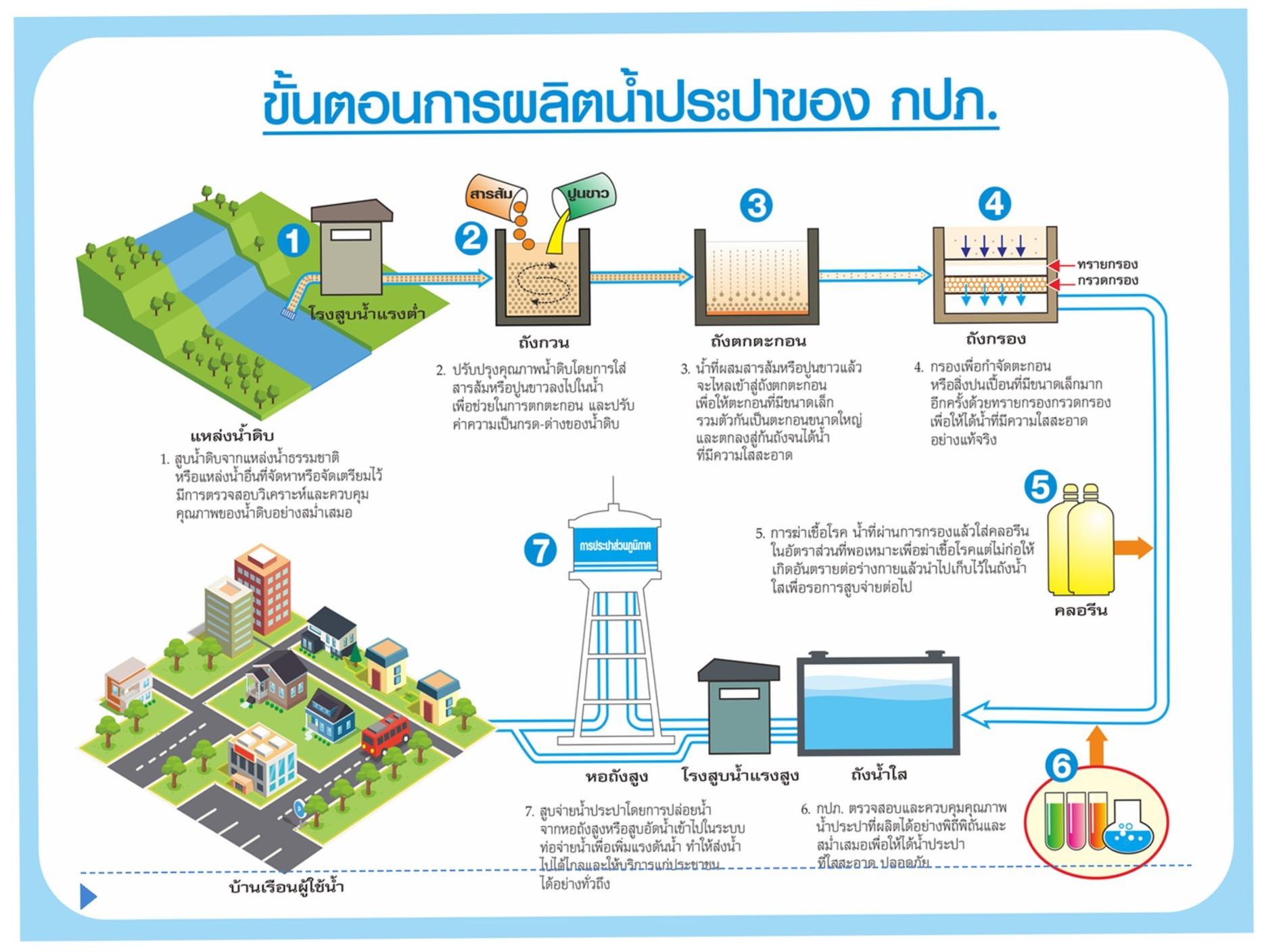The benefits and uses of tap water.
Last updated: 14 Feb 2025
2227 Views

Did you know? Currently, we use an average of 200 liters of tap water per person per day. Let's take a look at how much water is used in each activity...
- Brushing teeth (27 liters/person/day)
- Using the toilet (72 liters/person/day)
- Washing dishes (50 liters/time/day)
- Doing laundry (130 liters/time/day)
- Taking a shower (90 liters/person/day)

The amounts of water mentioned above are just rough estimates and can vary depending on individual water usage habits. However, did you know that tap water contains a chemical that plays a crucial role in its production before it becomes the water we use every day? That chemical is called Poly Aluminium Chloride.
What is Poly Aluminium Chloride?
Poly Aluminium Chloride, or simply PAC, is a coagulating agent that helps speed up the sedimentation process and also reduces water turbidity. Using PAC is an ideal choice in water treatment systems to enhance efficiency and control the water quality, ensuring it meets the required standards before it is distributed for use.
So let's take a look at the example of how they use PAC. Here, we will take a look at the water supply production process of the PWA.

From the flowchart above, we can see the steps in the tap water production process, how many steps there are, and what happens in each one. In Step 2, PAC (also known as a coagulating agent) is added. This helps improve the quality of the water by enhancing the sedimentation process and adjusting the pH level of the raw water before it moves on to the next step.
Hmm, but wait! What else can PAC be used for?
What is PAC used for?
1. Groundwater
Groundwater is water that is stored or accumulated beneath the ground. It can be used for both consumption and other purposes. However, before it is used, it must undergo treatment or quality improvement due to contamination with sediments, suspended solids, and other impurities. One method is to allow the water to settle in a container for some time, letting the sediment naturally settle out to make the water clearer. However, adding PAC helps accelerate the sedimentation process, making the water purer and cleaner more quickly.
1. Groundwater
Groundwater is water that is stored or accumulated beneath the ground. It can be used for both consumption and other purposes. However, before it is used, it must undergo treatment or quality improvement due to contamination with sediments, suspended solids, and other impurities. One method is to allow the water to settle in a container for some time, letting the sediment naturally settle out to make the water clearer. However, adding PAC helps accelerate the sedimentation process, making the water purer and cleaner more quickly.
2. Industrial or Livestock Farm Wastewater
Wastewater from industrial factories, whether it comes from the production process or the washing of raw materials, can have significant negative effects on communities, the environment, and surrounding ecosystems if released without treatment. Similarly, wastewater from livestock farms, such as pig or chicken farms, which results from cleaning the facilities, can also cause pollution. PAC can be used to accelerate the sedimentation process, improving the clarity and cleanliness of the water, making it safer for disposal or reuse.
Wastewater from industrial factories, whether it comes from the production process or the washing of raw materials, can have significant negative effects on communities, the environment, and surrounding ecosystems if released without treatment. Similarly, wastewater from livestock farms, such as pig or chicken farms, which results from cleaning the facilities, can also cause pollution. PAC can be used to accelerate the sedimentation process, improving the clarity and cleanliness of the water, making it safer for disposal or reuse.
3. Used in Aquaculture Ponds
If you want the water in an aquaculture pond to be clear and free from sediment, PAC can be added to accelerate the sedimentation process. This will help make the water in the pond clearer and free of particles. However, it is recommended to move the aquatic animals out of the pond before adding PAC to avoid any potential harm to them during the treatment process.
If you want the water in an aquaculture pond to be clear and free from sediment, PAC can be added to accelerate the sedimentation process. This will help make the water in the pond clearer and free of particles. However, it is recommended to move the aquatic animals out of the pond before adding PAC to avoid any potential harm to them during the treatment process.
Now that we know what Poly Aluminium Chloride (PAC), also known as a coagulating agent, is, what it does, and where it can be used, along with some interesting facts, we hope this article has been helpful to you. Remember to always consider its suitability and appropriateness before using it in any application.
Reference : Provincial Waterworks Authority (PWA)
Related Content
Chlorine 90% is chemically known as Trichloroisocyanuric Acid (TCCA).
17 Nov 2025
On October 31 – November 1, 2025...
7 Nov 2025
Clean water is essential for our daily lives as well as for numerous industries...
7 Oct 2025


